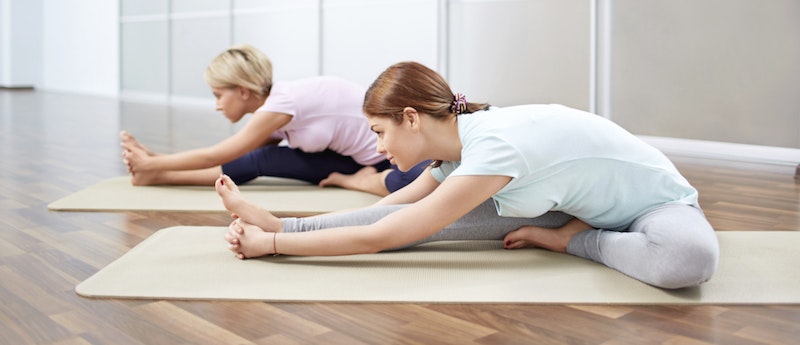Do you really need to stretch when you work out?
Common wisdom used to be that stretching before a workout warmed up your muscles so you wouldn’t get hurt. But now it seems that this type of static stretching (when you hold a stretch) might not help and may even make your muscles feel weaker, without preventing injuries.
Post-workout stretching may not be helpful either. Despite the advice of trainers everywhere, research shows that stretching doesn’t prevent soreness after big workouts or help in recovery. If you like to stretch after a workout or run, it's probably fine — just be gentle.
So why stretch at all?
While a pre- or post-workout stretch might not help your performance, there are other good reasons — and times — to stretch!
The best and most obvious reason to stretch is to increase your flexibility and range of motion, which comes in handy when you need to bend over to pick stuff up or dig your shoes out from under the couch.
Stretching can also release the tension in tight muscles and joints and prevent injuries during day-to-day activities like picking up boxes and reaching for things on high shelves.
How to get loose and limber
If you’re not very flexible right now, start slowly so you don’t get hurt from overdoing it. (If you’re getting care for a chronic condition, check with your doctor before making any major changes to your workout routine.)
Here are some tips to keep your stretching safe:
- Stretch after your muscles are warm. For stretching, a warm-up might be a walk or gentle stretching. A post-workout stretch can reduce soreness and increase circulation to your hardworking muscles.
- Stretch often. Move it or lose it! Two or three sessions of stretching per week can help increase your flexibility, but if you don’t keep it up you’ll soon be back to square one. It’s OK to stretch every day too, especially if you’re stiff in places or are trying to recover your range of motion. If it’s hard to fit in, try doing a few minutes after a warm shower or before bed.
- Hold it, but not till it hurts. Stretch to the point of light tension — not pain — and hold it for 30–60 seconds. Bouncing a stretch (when you add force suddenly) can hurt your muscles, especially if you do it too fast.
- Variety is good. Tai chi and some forms of yoga, like restorative or gentle hatha, include a lot of stretching. Taking a class puts the time on your schedule, and you might work your muscles and joints differently from your usual routine.
Selected references
- Mayo Clinic Staff. Stretching: Focus on Flexibility. Mayo Clinic website. March 4, 2014.
- American Council on Exercise (ACE). Flexibility Benefits. ACE website.
- Andersen JC. Stretching Before and After Exercise: Effect on Muscle Soreness and Injury Risk. Journal of Athletic Training. 2005. [Link]





